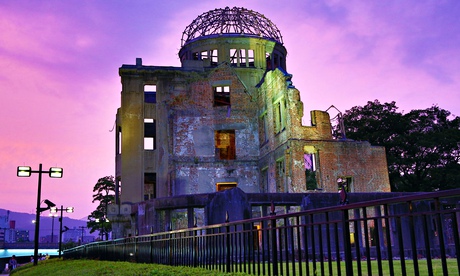
1 | Hiroshima Peace Memorial
Preserved from the ruins, 1945
The greatest monuments to peace often emerge from the remnants of destruction, as we see in the skeletal Genbaku Dome in Hiroshima, presciently preserved by the city’s survivors. When the A-bomb was dropped on 6 August 1945, it annihilated the commercial and political centre of Hiroshima. The domed Prefectural Industrial Promotion Hall was one of the few buildings to withstand the blast. A plaque at the site reads: “Let all the souls here rest in peace. For [we] shall not repeat the evil.” The original Japanese lacks the pronoun. Who is it that shall be trusted to refrain from barbarity?
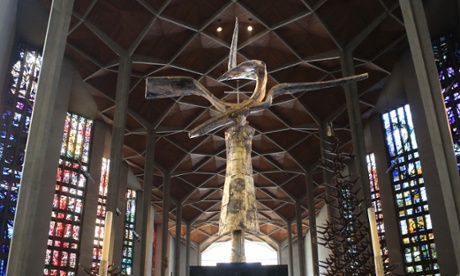
2 | High Altar Cross
Geoffrey Clarke, Coventry Cathedral, 1960-1962
Coventry Cathedral is a monument to peace and reconciliation. After Luftwaffe bombs incinerated much of it, the rubble became endowed with sacred significance, including crosses formed from charred wooden beams and melted roofing nails. For all the power of Basil Spence’s design for the new cathedral, and its striking art, – including Piper windows, Sutherland tapestry, and Clarke and Epstein sculptures – the humble form of fused nails has become Coventry’s most evocative symbol. Nail crosses have been sent, like relics of old, around the world, and the archbishop wears one around his neck.
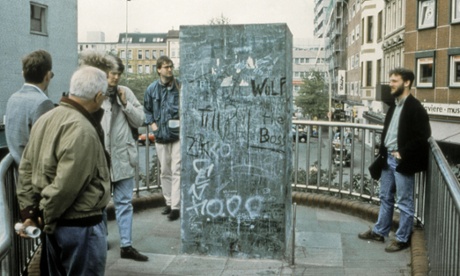
3 | Monument Against War and Fascism and for Peace
Jochen Gerz and Esther Shalev-Gerz, Harburg, 1986
This monument may not look like much, but that’s the point. In 1986 the artists unveiled a 45ft-high pillar, covered in lead, on which they invited visitors to inscribe their names. As sections filled up, the monument was lowered, until it was completely submerged in 1993. A burial stone is all that remains above ground, with the pillar visible from a chamber below. The monument doesn’t battle repression by attempting to stand for ever, but by sinking away, embodying repression itself. The artists write: “In the end, it is only we ourselves who can rise up against injustice.”
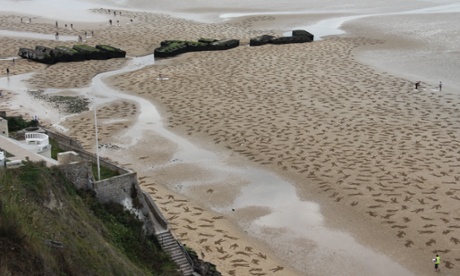
4 | The Fallen
Sand in Your Eye, Arromanche, Normandy, France, 2013
Monuments do not have to be places where we passively grieve; they can also be objects and sites we create together. On International Peace Day 2013, the group Sand in Your Eye worked with volunteers to create a temporary memorial to the 9,000 people – from all sides – who perished on the beaches of Normandy on D-day, 6 June 1944. Using stencils of fallen bodies, volunteers raked the sand to reveal soldiers’ silhouettes, before the evening tide poignantly washed away the figures. While honoring the Allied victory, the work underscores the tragedy of every lost life.
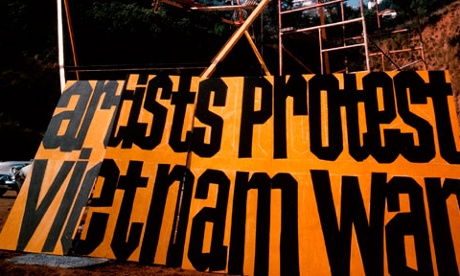
5 | The Artists’ Tower of Protest, 1966
Irving Petlin and Mark di Suvero, Los Angeles, 1966
In the mid-1960s, Petlin and di Suvero hatched an idea for a collaborative artistic protest against the Vietnam war, resulting in the peace tower, which stood for several months in West Hollywood. Di Suvero designed a minimalist steeple, around which he and Petlin hung hundreds of small works lent by famous artists of the era, including Robert Motherwell, Philip Guston, Ad Reinhardt, Elaine de Kooning, Richard Diebenkorn, Louise Nevelson, Frank Stella, Roy Lichtenstein and Leon Golub. The project was recreated in New York in 2006, hoping to inspire a new generation of artists to protest conflict.
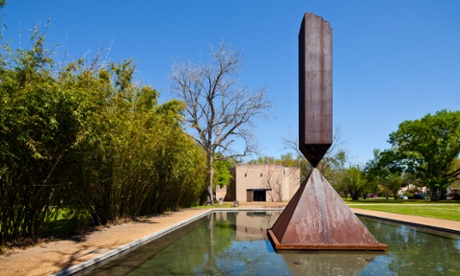
6 | Broken Obelisk
Barnett Newman, Houston, 1963-67
Best known as an abstract expressionist painter, this is one of Newman’s few sculptures. Following the assassination of Martin Luther King in 1968, owners John and Dominique de Menil offered to donate the sculpture to the city of Houston in King’s memory. A councillor informed them that the city preferred “a nice drinking fountain”. It now sits in a reflecting pool outside Houston’s Rothko Chapel, its severed form echoing the abrupt end of King’s life.
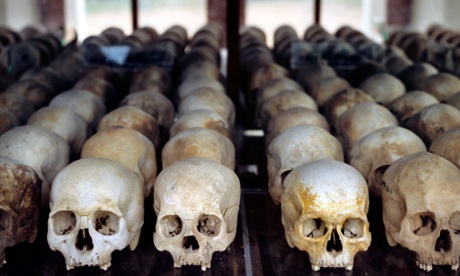
7 | Choeung Ek Stupa
Phnom Penh, Cambodia, 2005
Between 1975 and 1979, Pol Pot and his soldiers slaughtered 1.7 million fellow Cambodians, a fifth of the country’s population. The skeletons contained in this monument constitute only a portion of the more than 17,000 men, women and children murdered on the site by the Khmer Rouge, often after torture. A stupa is a historic Buddhist funerary structure, traditionally built to house relics of the Buddha, or other holy personages. Here the bones of everyday Cambodians – many now anonymous – become sacred, returning to them a measure of dignity, and providing a focal point for the ritual work of reconciliation.
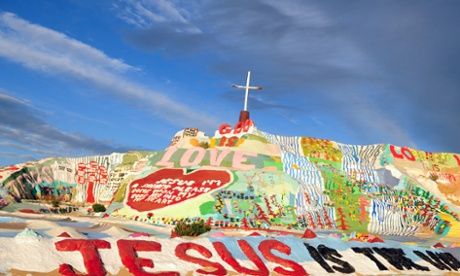
8 | Salvation Mountain
Leonard Knight, Niland, California, 1986
After a conversion experience in his mid-30s, Knight spent the rest of his life looking for creative ways to proclaim his message of universal love. He began by creating a hot-air balloon bedecked with prayers. When the balloon failed, he turned to building a mountain out of adobe clay in the Californian desert, which he coated with paint donated by visitors over the course of several decades. Until his 80s he lived in an old fire truck parked beside the mountain. He turned his philosophy into a literal Sermon on the Mount: “Love Jesus and keep it simple.”
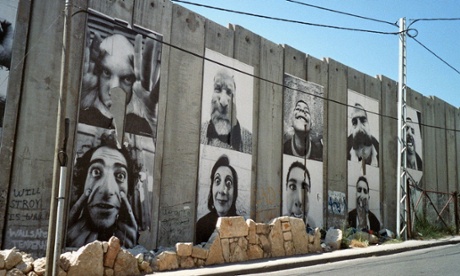
9 | Face2Face
JR, Bethlehem, 2007
The Israel-Palestine conflict seems like an unlikely source of humour. But as JR demonstrates, humour may be an important conduit for dialogue. Noting that Israelis and Palestinians usually only see each other through the distorting lens of the media, JR photographed people making funny faces on opposite sides of the separation barrier between Israel and the West Bank, who would otherwise be neighbours. “Most of the time people can’t recognise who is the Israeli and who is the Palestinian, so they couldn’t recognise who they were supposed to be,” said JR. “They’re much more open than you think they are.”
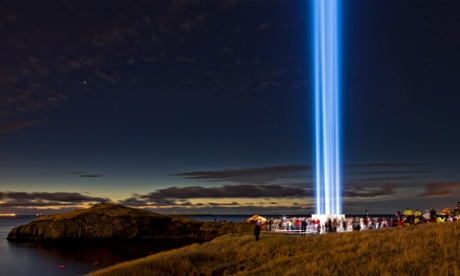
10 | Imagine Peace Tower
Yoko Ono, Reykjavik, 2007
Yoko Ono is still underrated as an artist. Indeed, it was her visionary conceptual art that first enraptured John Lennon. Located on an island off Reykjavik, this piece arose from Ono’s early idea for a “light house” channelled through prisms. Here beams of light, generated by geothermal power, emanate from a wishing well, as if the hopes of humanity cannot help but hurtle to the skies to proclaim their message. The monument is both a memorial to her late husband as well as his radical vision of peace. To “imagine there’s no heaven” requires a prophet.
Art & Religion in the 21st Century by Aaron Rosen is published by Thames & Hudson







